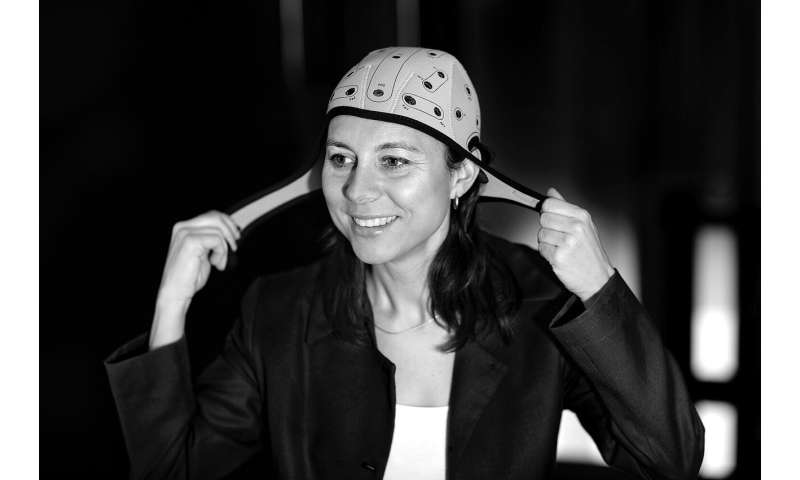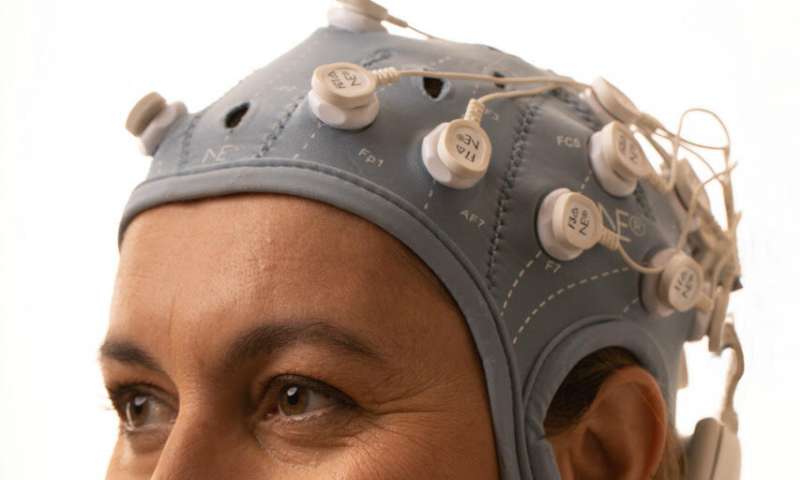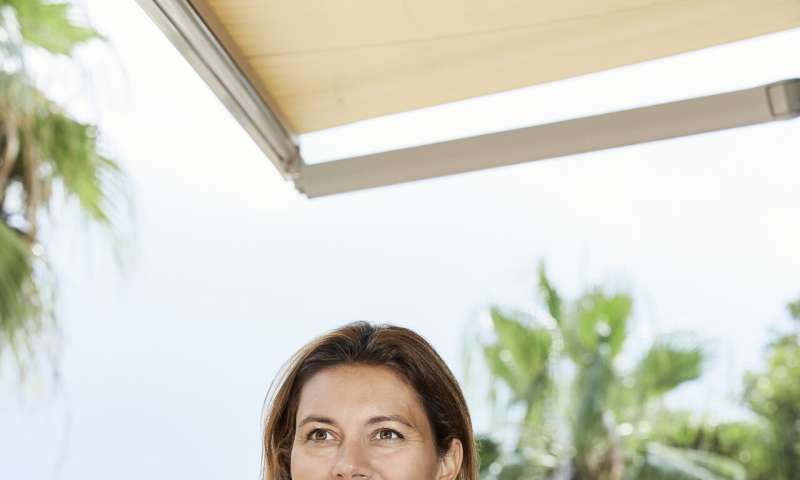A portable device to treat major brain disorders remotely

Spanish innovator Ana Maiques has developed a wireless device to treat brain diseases at patients' homes. Her research has had a considerable boost during the Covid-19 emergency
Ana Maiques has always been attracted by the mysteries of the human brain. "To unlock it is like a crusade of humankind," she says.
Therefore, twenty years ago Maiques decided to use her economic professional background in the neuroscience field. Nominated by IESE as one of the most influential entrepreneurs under 40 in Spain, winner of the 2014 EU Prize for Women Innovators – to mention some of the awards achieved – she has proved that high-risk research can become a business model.
In 2000 Maiques founded the Barcelona-based company Starlab, together with the physicist and mathematician Giulio Ruffini, to study computer-controlled brain stimulation. "The objective of the company was to do brain science and then take it to the market. Giulio is a pure scientist and I am a business person. This helped to create both cultures in the company."
The following step was the creation of the US and Spain-based spin-off Neuroelectrics that has developed wireless telemedicine platforms and medical devices for brain monitoring and stimulation. They designed a head cap with 32 electrodes, capable of treating many neurological disorders such as epilepsy, Parkinson's, Alzheimer, anxiety and depression.

Maiques explains: "The electrodes can pick up brain signals. As neurons communicate electrically, we can make an electroencephalogram (EEG). Moreover, the electrodes can inject current into the brain. So the technology has the potential to both make a diagnosis and provide therapy through electrical brain stimulation. Another advantage is the absence of major side effects, compared to drugs. For example, in pathologies like epilepsy it is a very big issue."
Telemedicine has been crucial during the coronavirus emergency and the restrictions to avoid the spread of the infection. Maiques says: "When the Covid-19 pandemic broke out, patients couldn't go to hospitals to receive depression treatment. So here in the US, we asked the Food and Drug Administration (FDA) to make clinical trials to treat this pathology at home. And they decided to run the risk and gave us the green light. Because of the coronavirus, I think our research has jumped at least five years ahead for our home therapy."
Such long-term research involves high-risk investment. This is why public support of the EU Future and Emerging Technologies (FET) programme has been essential to help Maiques' activity and career to take off.
"When we started we had a lot of ideas and little money. The FET support for our projects HIVE and LUMINOUS has been really important. Without it, the results described above wouldn't exist. In 2006 we had only developed the technology to read the brain. When we had the opportunity to submit a project for FET, we started to think big: what is the potential to interact with the brain? If you can read the brain, can you write on it? And the EU programme allowed us to put together a really long-term visionary proposal: can two brains communicate?"

"They told us: 'Shoot for the moon, because even if you fail, you will land among the stars.' So we aimed really high and we ended up developing the brain stimulation technology, which is already helping patients." While waiting to enter the market, the device to treat brain diseases is currently being tested in hospitals.
Today Maiques is one of the experts of the European Innovation Council (EIC) advisory board, who recently published its Vision document. The EIC aims to offer an advanced science-and-technology research programme and an accelerator for start-ups and SMEs. It will therefore integrate FET, now EIC Pathfinder, and the SME Instrument, now EIC Accelerator.
She says: "What the EIC wants to do is to transform hi-tech science into successful business. For the first time it has created a blended finance mechanism, allowing the European Commission to provide both grants and direct investments to companies."
"The generation of companies we want to support in Europe should address deep-tech solving problems. If you want this, you need relevant investment, high-risk research and preparation to failures. That was the FET spirit and we are so happy that the Pathfinder is included in the EIC: it will grant founders the visibility of their deep-tech companies and potential companies that emerged based on European funding. The EIC should create a lighthouse where all the entrepreneurs in Europe can look at."
Provided by iCube Programme